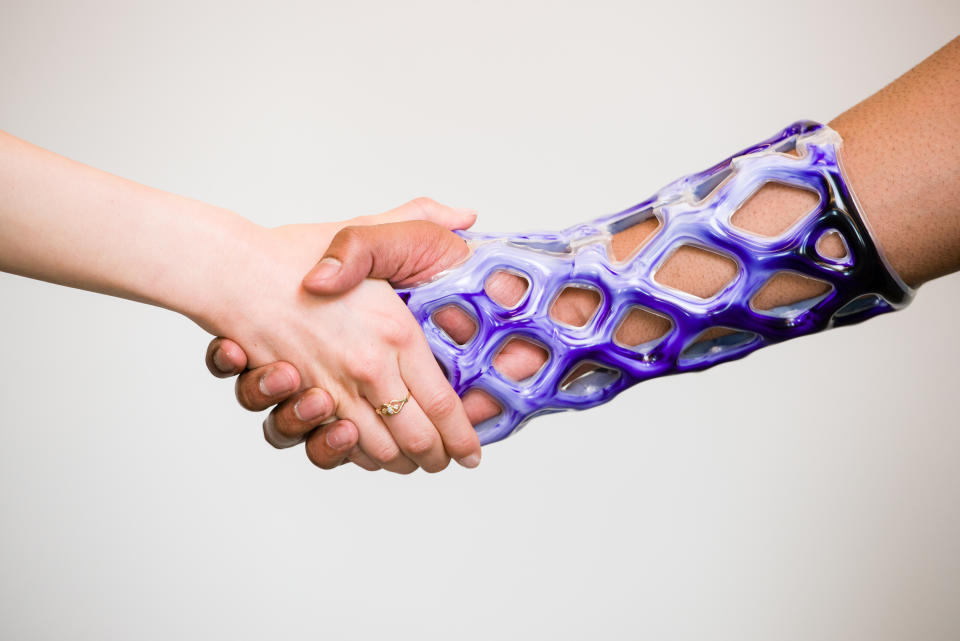Waterproof cast lets patients swim with broken bones
Breaking your arm is a pain (literally). The cast is heavy, has to stay dry and causes the inaccessible skin underneath to itch.
But thanks to engineers at the Chicago-based start-up Cast21, cumbersome casts could soon be a thing of the past.
READ MORE: 'China doll' baby born with bones so brittle a sneeze could cause a fracture
The team have created a mesh sleeve that slips onto a patient’s wrist. Once in place, the device is injected with a liquid resin that quickly hardens, giving fractured bones the support they need to heal.
And the pretzel-like design allows fresh air to reach most of the skin, promoting healing and allowing the patient to scratch away if necessary.
With the technology still in its infancy, a forearm sleeve is only available in the US, but Cast21 has big ambitions to improve patient outcomes all over the world.

“We have this radical notion that you can enjoy your healing experience,” Veronica Hogg, Cast21's vice president of engineering, said.
“You don't need to be restrained from daily activities.”
READ MORE: Boy’s Broken Bones Had Unusual Cause
Jason Troutner, one of the brains behind the design, came up with the idea after multiple injuries left him spending years of his life in casts made of fibreglass.
“Materials used in fibreglass casts aren’t waterproof; they absorb and trap water,” he told The American Society of Mechanical Engineers (ASME).
“Fibreglass casts are poorly engineered and not patient friendly. For an engineer, it seems like such a lazy and impractical solution.”

Mr Troutner and colleagues therefore created a flexible, padded sleeve that allows wearers to shower, exercise and even swim.
When a patient goes to have the “cast” fitted, its hollow tubes are injected with a resin that hardens in as little as 10 minutes.
The end result is said to be around 70% lighter than traditional casts, ASME reported.
And for the fashion conscious, the sleeve can reportedly be dyed different colours, including a “cookies and cream” hue.
READ MORE: Broken bones tied to increased risk of death for up to 10 years
When it comes to removing the sleeve, the process is said to be much less traumatic than the alternative, which gets cut with a saw.
“The majority of fractures happen in children, adolescents and the elderly,” Ms Hogg said.
“Those saws are very loud and all this debris flies off and it’s very messy. It can be extremely frightening. The cast saw also presents a risk of burns to the patient.
“Our product does not require that at all. It’s designed so a physician can take clinical shears, snip through the tabs and pull it open easily.
“It was designed to completely eliminate the use of a cast saw and make the healing process far more pleasant for the patient.”

Cast21 is looking to create more sizes of its forearm sleeve, as well as casts for broken legs.
“The idea is to prove this technology works”, Ms Hogg said. “Right now we are past the prototype stage and have a fully functioning model in place for the forearm.
“We hope this technology can span across the entire body. We are looking forward to having a lower limb model for ankle fractures soon.
“We can also do a longer arm model or a model that goes up to the fingers as well.”
Cast21 also hopes the sleeve could one day be used to support limbs after surgery.
Waterproof, 3D-printed casts are already available in the US and Europe, however, these can cost hundreds of dollars and take weeks to arrive.
Ms Hogg claims Cast21’s sleeve will be a “competitive price” that suits a “large population”.


